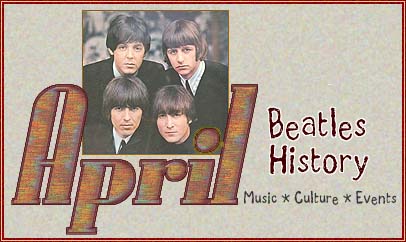 History offers History offers
a chance
to truly
understand
how the past
impacts the now.
Follow our
daily timelime
of historical
events to
discover the
role The Beatles
played in changing
the modern world.
THE FOLLOWING EVENTS TOOK PLACE ON APRIL 16
 1724--The first Easter is observed. 1724--The first Easter is observed.
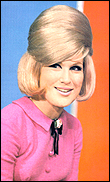 1918--Spike Milligan, actor-comedian is born in Ahmed Nagar, India. 1918--Spike Milligan, actor-comedian is born in Ahmed Nagar, India.
1924--Henry Mancini, movie composer and conductor, is born in Cleveland, Ohio.
1939--Dusty Springfield is born Mary O'Brien in London. She was one of the most popular Brit girl singers during the 1960s, with numerous top ten hits.
1943--In Basel, Switzerland, Albert Hoffman, a Swiss chemist working at the Sandoz pharmaceutical research laboratory, accidentally consumes LSD-25, a synthetic drug he had created in 1938 as part of his research into the medicinal value of lysergic acid compounds. A tiny amount of the substance accidentally seeped through the skin of his finger. After taking the drug, formally known as lysergic acid diethylamide, Dr. Hoffman was disturbed by unusual sensations and hallucinations. In his notes, he related the experience: "Last Friday, April 16, 1943, I was forced to interrupt my work in the laboratory in the middle of the afternoon and proceed home, being affected by a remarkable restlessness, combined with a slight dizziness. At home I lay down and sank into a not unpleasant, intoxicated-like condition characterized by an extremely stimulated imagination. In a dreamlike state, with eyes closed (I found the daylight to be unpleasantly glaring), I perceived an uninterrupted stream of fantastic pictures, extraordinary shapes with intense, kaleidoscopic play of colors. 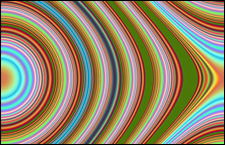 After some two hours this condition faded away." After intentionally taking the drug again to confirm that it had caused this strange physical and mental state, Dr. Hoffman published a report announcing his discovery, and so LSD made its entry into the world as a hallucinogenic drug. Widespread use of the so-called "mind-expanding" drug did not begin until the 1960s, when counterculture figures such as Albert M. Hubbard, Timothy Leary, Ken Kesey, and The Beatles publicly expounded on the benefits of using LSD as a recreational drug. The manufacture, sale, possession, and use of LSD, known to cause negative reactions in some of those who take it, were made illegal in the United States in 1965. After some two hours this condition faded away." After intentionally taking the drug again to confirm that it had caused this strange physical and mental state, Dr. Hoffman published a report announcing his discovery, and so LSD made its entry into the world as a hallucinogenic drug. Widespread use of the so-called "mind-expanding" drug did not begin until the 1960s, when counterculture figures such as Albert M. Hubbard, Timothy Leary, Ken Kesey, and The Beatles publicly expounded on the benefits of using LSD as a recreational drug. The manufacture, sale, possession, and use of LSD, known to cause negative reactions in some of those who take it, were made illegal in the United States in 1965.
 1953--President Dwight D. Eisenhower says in a speech to the American Society of Newspaper editors, “Every gun that is made, every warship launched, every rocket fired, signifies in the final sense as a theft from those who hunger and are not fed, those who are cold and not clothed.” 1953--President Dwight D. Eisenhower says in a speech to the American Society of Newspaper editors, “Every gun that is made, every warship launched, every rocket fired, signifies in the final sense as a theft from those who hunger and are not fed, those who are cold and not clothed.”
1956--Rock and roll pioneer Buddy Holly's first single, Blue Days, Black Nights, is released.
1961--The Beatles perform at the Top Ten Club, Reeperbahn, Hamburg, West Germany.
1962--The Beatles perform at the Star-Club, Hamburg, West Germany.
1963--The Beatles appear live on the Granada TV program "Scene at 6:30." They lip-sync to their single From Me to You. Because The Beatles had been taking advantage of performing on radio and television whenever possible, this live broadcast is at the same time as the broadcast of their taped performance on "The 625 Show" (recorded April 13).
 1964--Filming for "A Hard Day's Night" in the Notting Hill Gate section of London. The Beatles film "chase scenes" with (actors dressed as) policemen. These will later become known as the "Keystone Cops" scenes. The "police station" is actually St. John's Secondary School at 83 Clarendon Road (only the outside is filmed, although The Beatles did go inside to escape their fans during lulls in the filming). They also film in a nearby cul-de-sac (Heathfield Street). Sequences in Portland Road and Penzance Place are filmed, but left out of the final movie. Exactly when the film's title, "A Hard Day's Night," had been selected is uncertain, and whether it was based on a Ringo Starr original idea or a phrase he picked up from John Lennon's story "Sad Michael," will never be known with certainty. However, Lennon and McCartney have written the song, and The Beatles will record it at Abbey Road studios this evening (see separate entry). 1964--Filming for "A Hard Day's Night" in the Notting Hill Gate section of London. The Beatles film "chase scenes" with (actors dressed as) policemen. These will later become known as the "Keystone Cops" scenes. The "police station" is actually St. John's Secondary School at 83 Clarendon Road (only the outside is filmed, although The Beatles did go inside to escape their fans during lulls in the filming). They also film in a nearby cul-de-sac (Heathfield Street). Sequences in Portland Road and Penzance Place are filmed, but left out of the final movie. Exactly when the film's title, "A Hard Day's Night," had been selected is uncertain, and whether it was based on a Ringo Starr original idea or a phrase he picked up from John Lennon's story "Sad Michael," will never be known with certainty. However, Lennon and McCartney have written the song, and The Beatles will record it at Abbey Road studios this evening (see separate entry).
1964--The Beatles in the recording studio (Studio Two, EMI Studios, London). They record the title track for their first film, "A Hard Day's Night." The writing of the song was a bit unusual in that John Lennon and Paul McCartney had the title first, and had to write a song to order. The song is completed in nine takes. "A Hard Day's Night" ended up being the title of the film, the title of a song, and the title of the associated album. The Beatles Anthology 1 includes Take 1of A Hard Day's Night from this recording session (Disc 2, Track 12).
1965--The Beatles would no longer appear live or pre-tape performances for Rediffusion Television's program "Ready, Steady, Go!" so John Lennon and George Harrison appear live on the program to give an interview plugging The Beatles' latest single Ticket to Ride. [Note: the program title had been changed to "Ready Steady Goes Live!" on April 2, 1965, but it would be changed back to "Ready, Steady, Go!" on June 4, 1965].
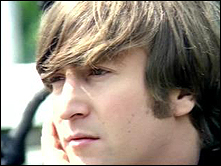 1966--The Beatles in the recording studio (Studio Two, EMI Studios, London). Rain is completed after eleven uninterrupted hours of overdubbing tambourine, bass, and more vocals. After tape-to-tape reduction, even more overdubs are added. Four mono mixes are made, with the third being selected as "best" (and the song wouldn't be mixed into stereo until December 2, 1969). 1966--The Beatles in the recording studio (Studio Two, EMI Studios, London). Rain is completed after eleven uninterrupted hours of overdubbing tambourine, bass, and more vocals. After tape-to-tape reduction, even more overdubs are added. Four mono mixes are made, with the third being selected as "best" (and the song wouldn't be mixed into stereo until December 2, 1969).
1969--The Beatles in the recording studio (Studio Three, EMI Studios, London). Recording Old Brown Shoe and Something. First Old Brown Shoe is recorded in four takes, the basic track consisting of Ringo Starr on drums, George Harrison on lead guitar and vocal, Paul McCartney on piano, and John Lennon playing rhythm guitar. Then overdubs, including a new lead vocal and backing vocals, are added. John does not participate in the recording of 13 takes of Something.
1971--US release of the Ringo Starr single It Don't Come Easy / Early 1970 (Apple). 12 weeks on Billboard chart; highest position #4.
1973--American journalist, Elliot Mintz, who was fired from his radio job the year before for playing the entire Some Time In New York City LP, interviews the Lennons at the Beverly Hills Hotel. Faced with the rumor that their marriage is on the rocks, John Lennon replies: “It’s much better now. They program you to say you’re gonna get sick of each other, but it’s entirely different...it grows!” He assures Mintz that “1973 is our year...the whole ball game changes. Yoko is becoming herself again.”
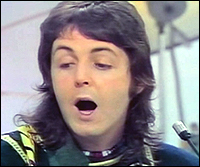 1973--Paul McCartney's television special "James Paul McCartney" is broadcast by ABC-TV in the US. ATV will broadcast the special in the UK on May 10. It receives very mixed reviews. 1973--Paul McCartney's television special "James Paul McCartney" is broadcast by ABC-TV in the US. ATV will broadcast the special in the UK on May 10. It receives very mixed reviews.
1981--US release of The Beatles (unauthorized) LP's Dawn of the Silver Beatles and Lightning Strikes Twice (both PAC Records). Songs from the Beatles Decca audition, Jan. 1, 1962. Songs: Loved of the Loved, Money, Sure to Fall, Take Good Care of My Baby, Three Cool Cats, Like Dreamers Do, Crying Waiting Hoping, Searchin', Till There Was You, Memphis, Hello Little Girl, Sheik of Araby, To Know Her Is to Love Her, September in the Rain, and Besame Mucho. Sold by mail order.
1990--Over 72,000 people gather at London’s Wembley Stadium for an anti-aparthied concert honoring Nelson Mandela. Mandela had recently been released from prison.
1993--Paul McCartney headlines a concert at the Hollywood Bowl to celebrate Earth Day. He had last performed there as a member of The Beatles in 1965. Other performers at the concert include Ringo Starr, Steve Miller and Don Henley.
For more day-by-day history go to HistoryUnlimited.net
|
 History offers
History offers


